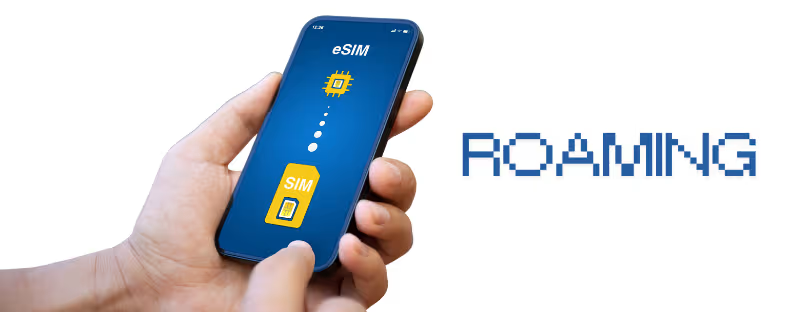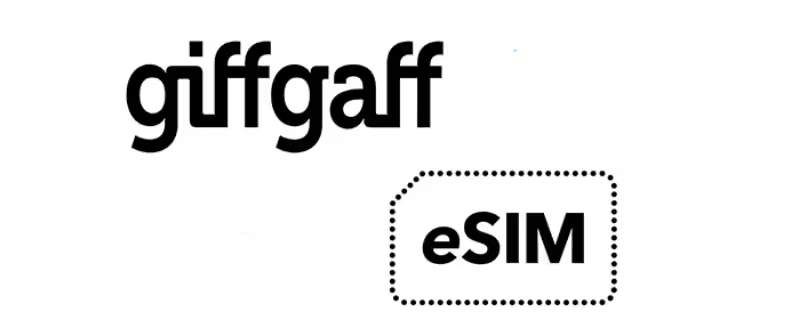
Stop Asking “How Much Data Do I Need?” — Start Asking “How Much Data Do I Waste?”
If you’ve ever sat in front of a mobile plan comparison chart, squinting at numbers like 5GB, 10GB, unlimited, you’ve probably asked yourself the same tired question everyone does: “How much data do I need?” wasting mobile data
It feels like the right question. After all, you don’t want to run out of data halfway through a trip, or get slapped with a nasty roaming bill just because you streamed Netflix on hotel Wi-Fi that wasn’t actually free. But here’s the thing: most of us are asking the wrong question. The real one should be:
“How much data do I waste?”
That shift in perspective changes everything. It turns the conversation away from hoarding gigabytes “just in case,” and towards actually using data smarter. And for travelers, digital nomads, and even just everyday phone users, that’s the difference between overspending and staying in control.
Why “How Much Do I Need?” Doesn’t Work Anymore
Once upon a time, mobile data plans were simple: you had a tiny allowance, you paid through the nose if you went over, and the goal was to ration it. Asking “how much do I need?” made sense then.
Fast forward to now, and the world looks different:
- Plans are bigger. Many local carriers and eSIM providers offer 20GB, 50GB, or even “unlimited” options.
- Usage patterns are weirder. One month you’re glued to YouTube, the next you barely touch your phone because you’re offline hiking in Patagonia.
- Roaming is a wildcard. A video call in your home country might be fine. Do that same call abroad on hotel Wi-Fi that drops you back to mobile, and suddenly you’ve chewed through half your travel plan.
So when you ask “how much do I need?”, you’re trying to predict the unpredictable. It’s like buying a year’s worth of groceries when you don’t even know what you’ll feel like eating tomorrow. Inevitably, you either overbuy or go hungry.
We compare, you connect. It’s that simple.
The Hidden World of Wasted Data
Here’s where it gets interesting: most people don’t need as much as they think. They just waste a lot.
Let me give you some real-world examples:
- Auto-playing videos on social media. Instagram, TikTok, and Facebook are data monsters. Just scrolling for 15 minutes can eat 300MB — and you probably didn’t even care about half the clips.
- Background apps. Your phone loves to sync in the background. Email refreshing, cloud backups, app updates… all of it quietly eats your data while you think you’re not using any.
- Streaming at full quality. Watching Netflix in 1080p instead of 480p on your phone? That’s like ordering a three-course meal when you only wanted a snack. On a six-inch screen, you won’t notice much difference — but your data plan will.
- Wi-Fi “phantoms.” You think you’re on hotel or café Wi-Fi, but the connection drops, and suddenly your phone switches back to mobile without warning. That quick “just checking something” becomes a surprise gigabyte gone.
- Unoptimized navigation. Google Maps lets you download offline areas. Yet how many people still run live maps the whole time on a road trip, streaming directions like they’re watching a live concert?
None of this is about what you need. It’s about what you waste without realizing.
Flipping the Script: Smarter Data Usage
When you reframe the question, you start thinking differently. Instead of “Do I need 10GB or 20GB?”, you ask: “Where am I losing the data I already have?”
Here are some practical ways to stop the leaks:
1. Tame Your Apps
Go into your phone settings and see which apps are using background data. Most operating systems let you restrict certain apps to Wi-Fi only. That way, Dropbox or Google Photos won’t eat up your travel eSIM while uploading vacation pictures.
2. Dial Down Streaming Quality
On Spotify, download playlists before you leave. On Netflix or YouTube, switch to standard definition unless you’re casting to a big screen. Trust me, you won’t notice the pixels, but your data bill will thank you.
3. Make Offline Your Friend
Download maps, guides, and even translation packs before you travel. It feels old-school, but nothing beats having Google Maps work flawlessly in airplane mode while everyone else is hunting for a signal.
4. Track, Don’t Guess
Most phones now have built-in data tracking tools. Use them. Set alerts. See where your usage goes. You’ll probably be shocked to find one app taking 70% of your monthly allowance. Once you know, you can adjust.
5. Use Wi-Fi Strategically (Not Blindly)
Not all Wi-Fi is created equal. Public Wi-Fi can be slow, insecure, or unreliable. Sometimes, it’s smarter to burn 200MB of your eSIM data on a call than to let a video buffer endlessly while wasting both your time and patience.
The Psychology of Data Hoarding
Part of the problem is mindset. We’ve been trained to think of mobile data like water in a desert: scarce, precious, life-or-death. That’s why we cling to “unlimited” plans, even if we never come close to using them.
But here’s the secret: the carriers know this. They love selling you more than you need because fear sells. You think, “Better safe than sorry.” They think, “Thanks for the extra €20 a month.”
When you flip to asking “How much am I wasting?”, you take that power back. Suddenly, the fear fades. You don’t need to buy peace of mind by hoarding gigabytes. You just need to be smarter about how you use what you already have.
Why This Matters for Travelers
For regular at-home use, wasting data is annoying but not catastrophic. But when you’re abroad, it’s a different game:
- Plans are pricier. Travel eSIMs or roaming add-ons can cost €10–€30 for just a few gigabytes. Every wasted MB stings more.
- Wi-Fi isn’t reliable. You can’t count on free, fast Wi-Fi everywhere you go. That makes your mobile data precious.
- Flexibility matters. If you’re hopping between countries, buying oversized plans for each one is both expensive and unnecessary. Optimizing usage lets you survive on smaller, cheaper packages.
By thinking in terms of waste, you become the kind of traveler who doesn’t just save money — you also stay connected without stress.
Start Small: A 7-Day Challenge
Here’s a simple experiment: for one week, stop worrying about “how much you need.” Instead, actively track “how much you waste.”
- Check your usage daily. See which apps drained your data.
- Write down one instance of waste. Maybe it was an autoplay video, or forgetting to download a map.
- Adjust one habit per day. Restrict background data, switch streaming quality, and go offline on maps.
At the end of the week, compare your actual usage to what you thought you “needed.” Chances are, you’ll realize you can cut your data plan in half without even noticing.
Final Thought: From Hoarder to Optimizer
The mobile industry loves keeping us in the dark, obsessing over numbers on a plan instead of how we actually use them. But once you flip the script, it’s liberating.
Stop asking “How much do I need?” That’s a fear-driven question that locks you into overspending. Start asking “How much do I waste?” That’s an empowerment question. It puts the control back in your hands.
Data isn’t about having more. It’s about wasting less, optimizing smarter, and making every megabyte count. Especially when you’re traveling, that shift is worth its weight in gold.
So the next time you’re choosing a plan, don’t panic over whether 10GB will be enough. Instead, take a look at your habits. You might discover you only need 5 GB—once you stop wasting the other 5.









